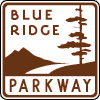Standing out
from the endless rolling green mountains of the Blue Ridge is Stone Mountain.
The 600 foot dome of exposed granite is a result of millions of years of
changes to the landscape revealing what we see today. Even though
the granite outcropping was extremely attractive to area miners, the area's
terrain proved to difficult to access. As a result, the land was
donated to the State of North Carolina and would become part of Stone Mountain
State Park in 1969. Stone Mountain received the honor of a National
Natural Landmark in 1975.
Stone Mountain State Park offers numerous activities from camping, fishing, and hiking. Of course because of the granite face, rock climbing is extremely popular at the park, and Stone Mountain is one of North Carolina's top rock climbing destinations.
Overlook Photos:
All photos taken by webmaster - July 21, 2007
Stone Mountain State Park offers numerous activities from camping, fishing, and hiking. Of course because of the granite face, rock climbing is extremely popular at the park, and Stone Mountain is one of North Carolina's top rock climbing destinations.
Overlook Photos:
All photos taken by webmaster - July 21, 2007
- North - Mile 190.0 - Puckett Cabin
- South - Mile 234.0 - Bullhead Mountain Overlook





Comments